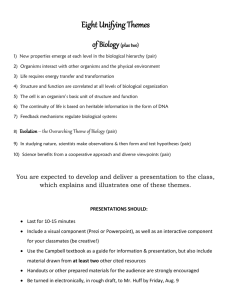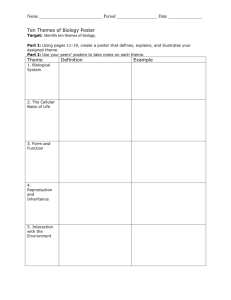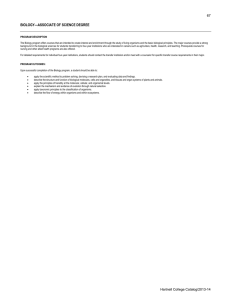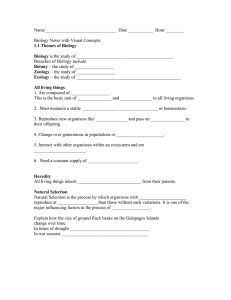CHAPTER 1 Introduction:... Overview: Inquiring About the World of Life
advertisement
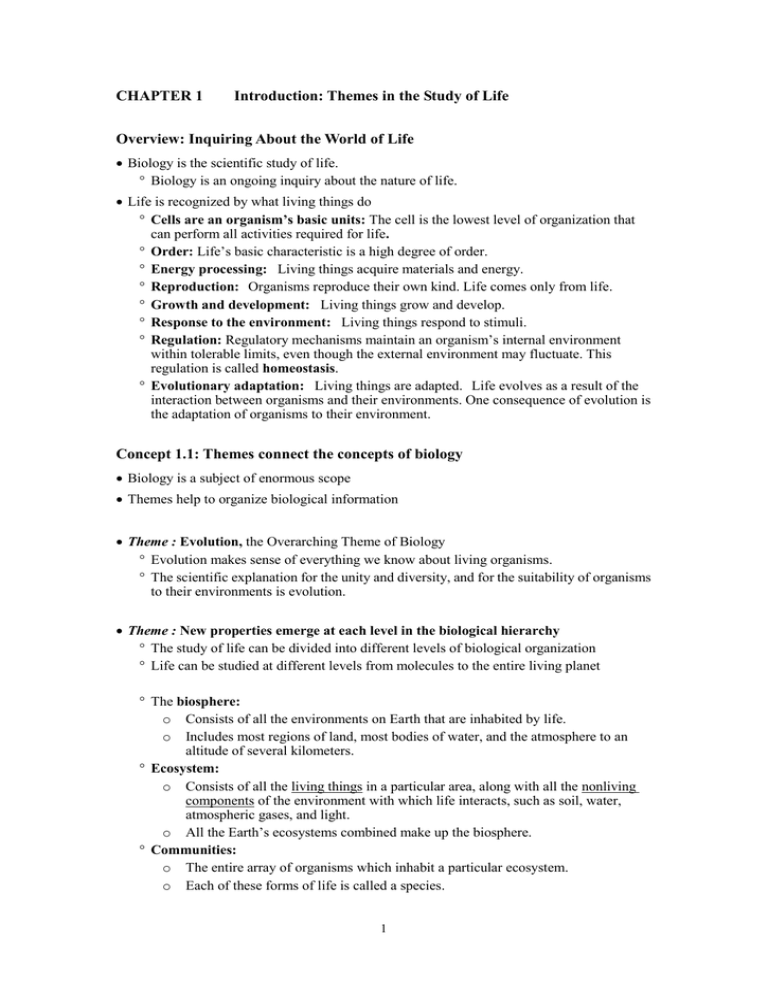
CHAPTER 1 Introduction: Themes in the Study of Life Overview: Inquiring About the World of Life Biology is the scientific study of life. Biology is an ongoing inquiry about the nature of life. Life is recognized by what living things do Cells are an organism’s basic units: The cell is the lowest level of organization that can perform all activities required for life. Order: Life’s basic characteristic is a high degree of order. Energy processing: Living things acquire materials and energy. Reproduction: Organisms reproduce their own kind. Life comes only from life. Growth and development: Living things grow and develop. Response to the environment: Living things respond to stimuli. Regulation: Regulatory mechanisms maintain an organism’s internal environment within tolerable limits, even though the external environment may fluctuate. This regulation is called homeostasis. Evolutionary adaptation: Living things are adapted. Life evolves as a result of the interaction between organisms and their environments. One consequence of evolution is the adaptation of organisms to their environment. Concept 1.1: Themes connect the concepts of biology Biology is a subject of enormous scope Themes help to organize biological information Theme : Evolution, the Overarching Theme of Biology Evolution makes sense of everything we know about living organisms. The scientific explanation for the unity and diversity, and for the suitability of organisms to their environments is evolution. Theme : New properties emerge at each level in the biological hierarchy The study of life can be divided into different levels of biological organization Life can be studied at different levels from molecules to the entire living planet The biosphere: o Consists of all the environments on Earth that are inhabited by life. o Includes most regions of land, most bodies of water, and the atmosphere to an altitude of several kilometers. Ecosystem: o Consists of all the living things in a particular area, along with all the nonliving components of the environment with which life interacts, such as soil, water, atmospheric gases, and light. o All the Earth’s ecosystems combined make up the biosphere. Communities: o The entire array of organisms which inhabit a particular ecosystem. o Each of these forms of life is called a species. 1 Populations: o Consists of all the individuals of a species living within the bounds of a specified area. o The set of populations that inhabiting a particular area make up community. Organisms: o Are individual living things. Organs and Organ Systems: o An organ carries out a particular function in the body. o A team of organs that cooperate in a specific function is called an organ system. Tissues: o A group of similar cells. Cells: o Is life’s fundamental unit of structure and function. Organelles: o The various functional components that make up cells. Molecules: o A molecule is a chemical structure consisting of atoms. Emergent properties result from the arrangement and interaction of parts within a system Emergent properties characterize nonbiological entities as well o For example, a functioning bicycle emerges only when all of the necessary parts connect in the correct way 2
